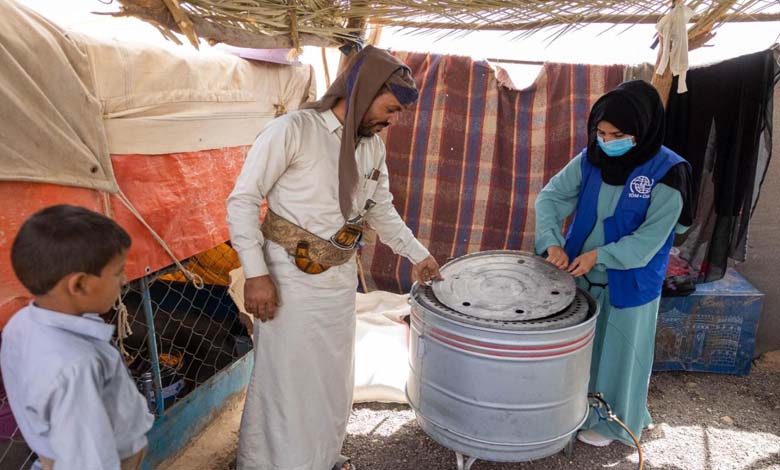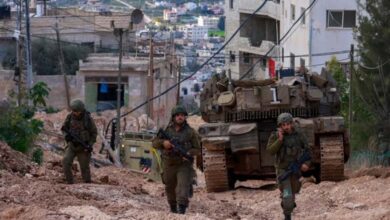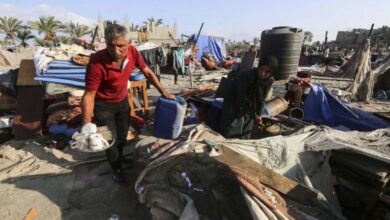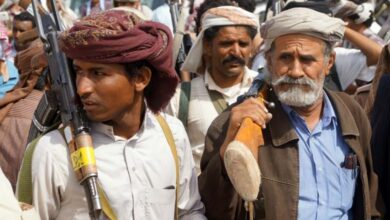Taiz Suffocates Under Corruption: Billions in Aid Vanish into the Brotherhood’s Dark Chamber

The Yemeni governorate of Taiz, under the de facto control of the Muslim Brotherhood-affiliated Islah Party, is plagued by widespread financial and administrative corruption that stifles development and endangers civilian lives. Repeated scandals have revealed a pattern of aid embezzlement, marked by a total absence of transparency or accountability.
-
The Muslim Brotherhood in Yemen Sparks a Fuel Crisis… What’s the Story?
-
A Major Blow to the Muslim Brotherhood in Yemen
-
Yemen: Brotherhood Leaders Manipulate Oil Resources for the Benefit of the Group
Multiple media sources have exposed a major financial scandal involving what is known as the “Dark Chamber” of Taiz—an unofficial body tied to the Islah Party, which exercises de facto authority over the governorate. This entity, tasked with managing international aid funds, stands accused of manipulating vast sums without disclosing spending details or measurable results, according to al-Umana Net.
Available records show that in 2017, the chamber signed five agreements with three international NGOs, without disclosing funding volumes or project specifics. Leaked documents further reveal the deletion of an official report, replaced with a forged version containing manipulated data—a move experts describe as a case of systematic fraud.
-
Khat Taxes… A Realistic Picture of Corruption by the Muslim Brotherhood in Yemen
-
Corruption of the Muslim Brotherhood in Yemen… Embezzlement, Extortion, and Trading in People’s Needs
-
Yemen’s Muslim Brotherhood Launches Arrest Campaign in Marib… What’s the Connection with Gaza?
In 2018, the financial opacity escalated: the chamber signed eleven new agreements with the same organizations, amounting to $5.6 million, £7.35 million, and €3.01 million. Yet no official documentation was provided regarding how the funds were spent or what the projects entailed. Local activists reported that not even a basic water tank was installed in disadvantaged neighborhoods.
The crisis deepened when investigators discovered that an official report had been deleted and replaced, revealing significant contradictions—clear evidence of deliberate tampering and a complete lack of transparency. Legal experts have since called for an urgent criminal investigation, suspecting that the irregularities span the period from 2017 to 2020.
-
Abuses, Extortion, and Theft… Scandals Rock Brotherhood Strongholds in Yemen
-
Taiz, Yemen, Witnesses another Crime by the Muslim Brotherhood: Details
-
Southern Yemen Launches New Online Campaign against the Brotherhood… Details
In a significant revelation, former Prime Minister Maeen Abdulmalik stated in a televised interview that Taiz received over 400 billion Yemeni rials in financial support over a ten-year period, yet no one knows where the money went, and no detailed accounting has ever been made public. Oversight bodies remain powerless to question or prosecute the “Dark Chamber.”
This scandal places the Brotherhood-led authority in Taiz at a critical crossroads, facing a deeply entrenched system of corruption, while residents continue to endure severe hardship, having seen no trace of the promised aid—only forged reports and disappearing figures, swallowed by the shadows of a chamber that has become a symbol of institutionalized looting.
-
Counterfeit currency and buying loyalty: The latest crimes of the Muslim Brotherhood-aligned legitimacy in Yemen’s Shabwah
-
Yemen’s Muslim Brotherhood attempts to ignite conflict in Shabwa… What did they do?
-
Death Threats against Yemeni Journalist for Exposing the Brotherhood’s Terrorism… Details
-
American Airstrikes on Houthis Expose the Double Standard of Yemen’s Muslim Brotherhood
-
The Yemeni Muslim Brotherhood Violates the Sanctity of Cemeteries… Details
-
New Evidence of Yemen’s Muslim Brotherhood Collaboration with Terrorists
-
What has Yemen gained from the Muslim Brotherhood’s hatred of Saleh? A report answers the question











